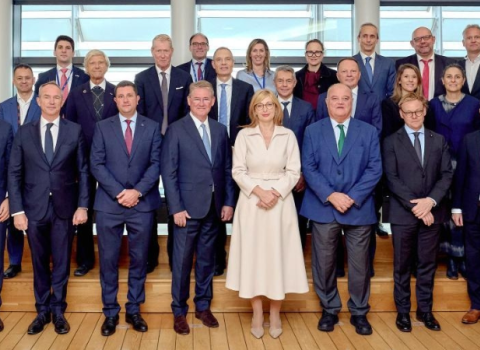
For a start, there are different views of what the concept entails. Indeed, one individual can view it from several perspectives as Sir John Tooke, Vice-Provost (Health) University College London, explained to delegates at the opening session of the Science|Business conference on Personalised Healthcare, held in London last week.
“I think of the question in several different guises – as a physician and as an academic clinical scientist: It’s easy to see why interpretations can be so different,” Tooke said. The essential thing is to look at personalised healthcare in a rounded way, and understand how new tools will enable treatments to be targeted in a more effective way, with a consequent potential to reduce costs.
In many senses this is at odds with current moves to control the cost of chronic disease by industrialising medicine. “When dealing with chronic disease there’s a tendency to look for simple solutions – asking 'is there a single test you can do?'”
In Tooke’s field of diabetes it is well known there is a link between the extent and severity of complications suffered as a result of the disease, and the degree to which blood glucose levels stray outside the normal range. In elderly patients the biggest determinant of staying within the normal range is whether or not they have a partner at home to help with monitoring. “Call that personalised medicine if you like,” said Tooke.
At the other extreme, personalised healthcare is about the ability to apply mathematical models to big systems (for which read the human body) and make use of this information to make diagnoses and prescribe and monitor treatment, in the view of Sir John Chisholm, Chairman of the UK Medical Research Council.
The hard thing here is dealing with the complexity of biomedical systems. “That’s the problem: there will be a time when we can put it all together in models. But it is very ambitious because of the dimensionality,” Chisholm told delegates.
However, there are areas where dimensionality is constrained. “This enables you to do stratified medicine, where you are looking at the [medical] class an individual belongs to, and there is a treatment that is specific to that group.”
Erik Tambuyzer, Senior Vice President of Public Policy for Genzyme Inc., agreed that from some perspectives personalised healthcare can be said to have existed for a long time. However, there is now a blossoming of biology and a wealth of new tools that make it possible to take a more sophisticated approach to its application. “It is right to go step-by-step, but we really need personalised healthcare – because we can do a much better job.”
For Tambuyzer, one of the key imperatives is to increase the interaction among those who can contribute to the deployment of personalised healthcare. For a start, the pharmaceutical and biotechnology industry needs to get more involved: “Industry can’t just sell a product and say it’s up to the physicians and the patients to take care of the rest: we [industry] have to be involved in all aspects of these processes.”
Above the scientific complexity lie layers of stultifying regulations. As Tambuyzer pointed out, there are different systems in Europe, and throughout the world, for the approval of drugs and diagnostics. There are also different rules on reimbursement from country to country, and in addition, the clinical value of diagnostic tests is not reflected in the amount that is paid for carrying them out. For example, cystic fibrosis mutation testing is reimbursed on the basis of the number of technical steps there are in the test, when what is important for the patient is what mutation is present, Tambuyzer noted.
It is also proving difficult to develop drugs and the biomarkers that will form the basis of the companion diagnostic, in parallel. The best biomarker is likely to come to light in the course of clinical development, but regulators take a dim view of any attempt to carry out retrospective analyses, or to subdivide the patient population.
Chisholm suggested that the only way to overcome the complexity inherent in personalised medicine is to confront it by taking an “integrative” approach. “Scientists are reductionists who remove all complicating factors: that doesn’t work with a real system.” As a first move, the MRC is funding programmes in rheumatoid arthritis and chronic obstructive pulmonary disease, where scientists are working with clinicians and pharmacists. “These are targeted at defined areas where it is conceivable – in some realistic timescale – that they will achieve something,” Chisholm said.
He added, “The elephant gets eaten faster if you get a fleet of mice and get them all to eat bits of it.”





 A unique international forum for public research organisations and companies to connect their external engagement with strategic interests around their R&D system.
A unique international forum for public research organisations and companies to connect their external engagement with strategic interests around their R&D system.